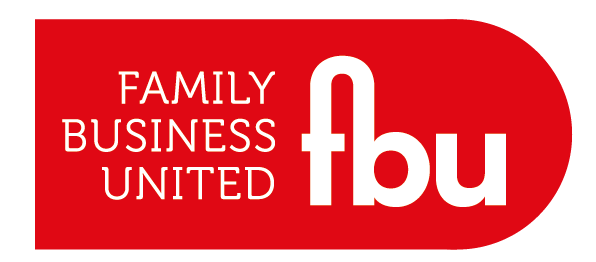How Family Businesses Harness Cross-Generational Strength For Change
- Paul Andrews - Founder & CEO, Family Business United

- Jun 25, 2025
- 4 min read
Updated: Aug 11, 2025

Family businesses are often viewed through the lens of tradition—steadfast, familiar, and consistent. But beneath the surface lies a quiet revolution. Increasingly, it is the interweaving of different generations within these firms that is driving innovation, digital transformation, and strategic evolution.
Where one generation brings experience, resilience, and long-term thinking, the next brings fresh perspective, digital fluency, and a desire for change. Together, they create a dynamic partnership that has the potential to steer family businesses into a future shaped by innovation, not inertia.
The Myth Of Stagnation
There’s a common misconception that family-run enterprises are inherently resistant to change, weighed down by legacy thinking or bound to “the way things have always been done.” In reality, many family firms are remarkably adaptive—precisely because they are not beholden to outside investors or short-term pressures. This autonomy gives them room to experiment, fail fast, and pivot when necessary.
What makes innovation in family businesses unique is the way it often unfolds: not in corporate labs or innovation hubs, but around dinner tables, during generational handovers, and through everyday collaboration between relatives with differing worldviews.
Generational Differences As A Strategic Advantage
The presence of multiple generations in one enterprise creates a rich environment for knowledge exchange. Older family members tend to bring in-depth sectoral knowledge, financial prudence, and relationship capital built over decades. Younger family members, by contrast, often challenge the status quo—armed with digital tools, an appetite for sustainability, and a finger on the pulse of emerging trends.
The tension between these perspectives, when managed well, becomes an engine for innovation. It prevents complacency while preserving the core values that make a family business distinct.
For example, a long-standing family manufacturer might explore automation and e-commerce because a younger family member returned from university with fresh ideas—or because a Gen Z niece persuaded the board to invest in AI-driven logistics. In such cases, the company evolves not in spite of its family structure, but because of it.
A Safe Space To Experiment
Unlike larger corporations, family firms often offer a safer space for experimentation. Family members, especially younger ones, are encouraged to try out new ventures, pilot projects, or tech integrations—knowing that support and understanding await, even if initial results fall short. This culture of psychological safety fosters a fertile ground for innovation.
Moreover, decisions can be made quickly and without layers of bureaucracy. If a younger director proposes a new digital marketing strategy or a sustainable packaging overhaul, they’re often presenting it directly to a parent or relative who holds decision-making power. This flat hierarchy can accelerate implementation and shorten feedback loops.
From Tradition To Transformation
Family businesses frequently blend traditional values with modern innovation in a way that resonates strongly with contemporary consumers. For instance:
Food and beverage producers may modernise branding and adopt eco-friendly packaging while still using generations-old recipes.
Retailers might invest in digital platforms and data analytics, all while maintaining the kind of personal customer service that large chains struggle to replicate.
Manufacturers often integrate smart technologies into legacy operations, improving efficiency without discarding craftsmanship.
A prime example can be seen in family-owned vineyards that adopt drone technology for crop monitoring, or legacy textile companies that invest in ethical sourcing and blockchain-backed supply chain transparency. These businesses preserve their heritage while positioning themselves firmly for the future.
Succession As A Catalyst For Change
Succession planning—a critical moment in any family business—often becomes a turning point for innovation. As leadership begins to shift to the next generation, so too does the business strategy. Incoming leaders tend to bring new priorities: ESG, technology integration, diversity, and global markets.
This transition is not without challenges. There may be resistance from older leaders who fear the loss of control or the abandonment of trusted practices. However, many successful transitions are marked by a phase of "co-leadership"—a period where different generations share the reins, ensuring that change is both respectful and bold.
In fact, some of the most transformative periods in a family business’s history come during these handovers, when values and vision are actively negotiated, and new paths forged.
Professionalising Innovation
To truly thrive, family businesses are increasingly professionalising their approach to innovation.
This includes:
Appointing non-family innovation leads or tech officers
Establishing family councils or innovation committees
Partnering with start-ups or incubators
Creating innovation budgets tied to clear KPIs
Importantly, many family firms are learning to balance the agility of family decision-making with the rigour of structured innovation processes. It’s no longer enough to rely on gut instinct alone; the new generation is bringing data-driven thinking to the table.
Innovation in family businesses doesn’t look like Silicon Valley disruption. It looks like evolution—purposeful, values-driven, and often deeply personal.
When generations work together, their complementary strengths can unlock bold transformation while preserving what makes the business unique.
In this way, family businesses become not relics of the past, but engines of the future—where tradition informs change, and where innovation is not a break from the past, but a continuation of the legacy.
And in a world obsessed with the next big thing, perhaps it is these enduring, adaptable enterprises that understand best how to grow something worth passing on.








%20copy%20(4)%20copy%20(1)%20copy%20copy%20(1)%20copy%20(1)-Medium-Quality.jpg)



.png)
























